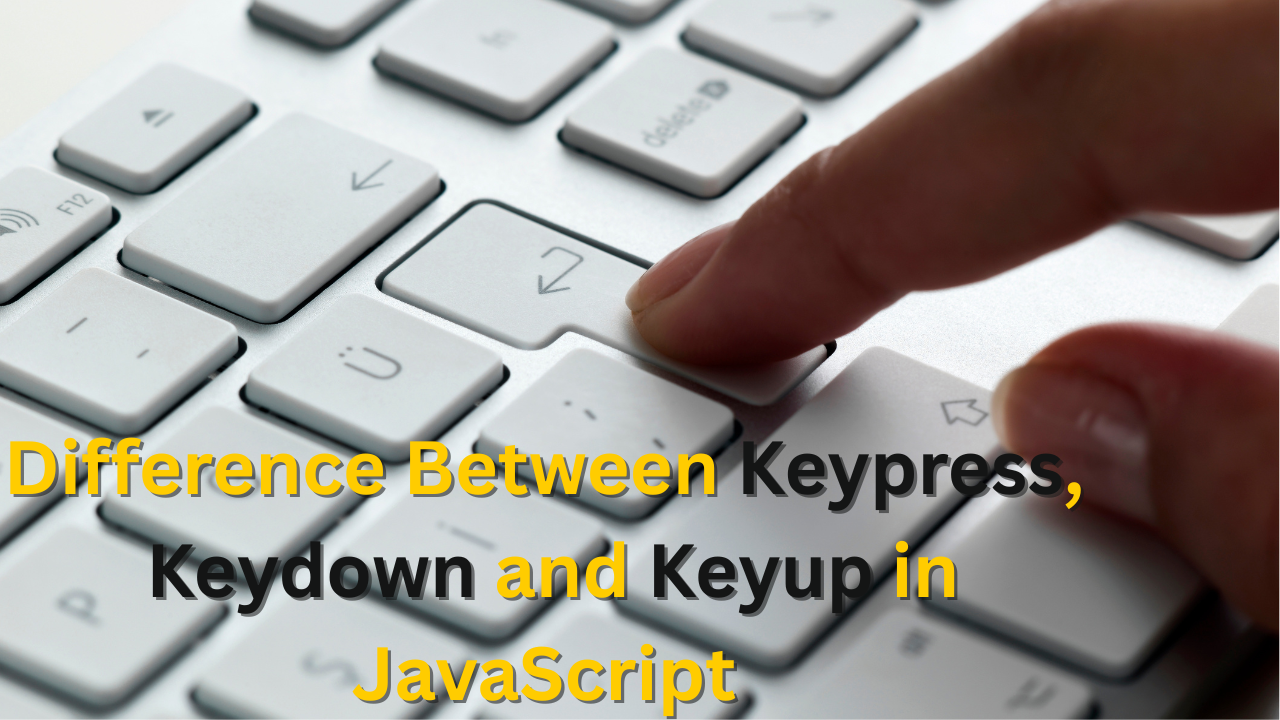 When typing on a keyboard, each keystroke initiates a specific response from the computer. In the context of JavaScript, this interaction is facilitated through keyboard events—namely, keydown, keypress, and keyup. These events serve as the primary means by which a web page can detect and respond to user input.
When typing on a keyboard, each keystroke initiates a specific response from the computer. In the context of JavaScript, this interaction is facilitated through keyboard events—namely, keydown, keypress, and keyup. These events serve as the primary means by which a web page can detect and respond to user input.
To elaborate: the keydown event occurs the instant a key is pressed down, regardless of which key it is. The keypress event, in contrast, is triggered only when a key that produces a character value is pressed (for example, letters or numbers, but not modifier keys like Shift or Ctrl). Finally, the keyup event fires when a key is released.
Understanding the distinction among these events is essential for implementing responsive and accessible web applications. In the following sections, we will provide illustrative examples to clarify their individual roles and practical applications.
What Are Keyboard Events?
Keyboard events function as signals transmitted from the keyboard to a website whenever a key is pressed, held, or released. Essentially, it can be viewed as a form of communication between the user and the computer—each key action generates a specific event. In JavaScript, these events are detected using handlers such as keydown, keyup, and keypress. Each event type corresponds to a distinct stage of the interaction, enabling developers to implement functionalities like moving a character in a game or recording user input in a form.
Key Differences Between Keypress, Keydown, and Keyup
Keydown
- Definition: Triggered the moment any key is pressed.
- Scope: Detects all keys, including modifiers (e.g., Shift, Arrow keys).
- Primary Use Cases:
- Essential for gaming scenarios where rapid key detection is necessary.
- Useful for identifying when a key is being held down.
Keypress
- Definition: Occurs after keydown, but only when a key generates a character value (such as letters or numbers).
- Scope: Does not respond to keys like Shift or Ctrl.
- Primary Use Cases:
- Ideal for capturing user input in text fields, such as search bars or chat windows.
- Focuses exclusively on keys that produce visible input.
Keyup
- Definition: Initiated when any key is released.
- Scope: Recognizes all key releases, regardless of key type.
- Primary Use Cases:
- Useful for actions that should occur once a key press has concluded (e.g., stopping a character’s movement in a game).
- Complements keydown by signaling the end of key interaction.
This structured overview clarifies the distinctions between keydown, keypress, and keyup events, emphasizing their unique roles and applications in keyboard event handling.
Visualizing the Events
Envision the process of pressing a key as analogous to compressing a spring-loaded ball. When you apply pressure—this corresponds to the "keydown" event—the sequence of actions is initiated. Should you press a character key, an associated mark appears, much like an imprint left by the ball; this represents the "keypress" event. Upon releasing the key, the ball returns to its original position, signifying the "keyup" event and the cessation of activity. The sequence unfolds as follows:
[Key pressed] → Keydown → (Keypress, if a character key) → [Key released] → Keyup
Practical Examples
Example 1: Using Keydown to Move a Game Character
Let’s say you’re making a game where pressing the Arrow Right key moves a character. keydown is perfect because it detects non-character keys like arrows.
document.addEventListener('keydown', (event) => {if (event.key === 'ArrowRight') {console.log('Character moves right!');}});
Example 2: Using Keypress to Capture Text Input
If you’re building a search bar, keypress helps capture letters or numbers as the user types.
document.addEventListener('keypress', (event) => {console.log(`You typed: ${event.key}`);});
Example 3: Using Keyup to Stop an Action
In a game, you might want a character to stop moving when you release the key. keyup is great for this.
document.addEventListener('keyup', (event) => {if (event.key === 'ArrowRight') {console.log('Character stopped moving!');}});
Useful Event Properties
Each keyboard event comes with helpful info, like which key was pressed. Here are key properties to know:
event.key: The key’s name (e.g., “A” or “ArrowUp”).event.code: The physical key’s code (e.g., “KeyA” for the “A” key).event.repeat: True if the key is held down (only inkeydown).
document.addEventListener('keydown', (event) => {console.log(`Key: ${event.key}, Code: ${event.code}, Repeat: ${event.repeat}`);});
Wrap-Up
Now you know the difference between keypress, keydown, and keyup! Use keydown for detecting any key press, keypress for typing characters, and keyup for actions when a key is released. These events let you make fun things like games or interactive forms. Keep experimenting to create awesome web experiences!
Key Concepts to Note:
- The "keydown" event is initiated immediately upon pressing any key—including non-character keys—which makes it particularly suitable for applications such as interactive games.
- The "keypress" event is limited to character input, such as letters and numbers, and is primarily used when capturing text entry.
- The "keyup" event occurs when a key is released, and is often utilized to halt ongoing actions or processes.
- To prevent default browser behaviors that may interfere with custom functionality, one should use "event.preventDefault()".
- To determine the specific key involved in an event, reference "event.key" or "event.code" for precise identification.



